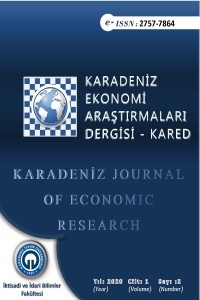Palestine and Muslim Big Powers: What are the major Determinants of Palestine Policy?
Despite ongoing bloody domestic battles, during the Medieval Era invading Holy Lands and controlling Palestine including territories of current Trans Jordan was a common policy of European big powers. That motivation so strong that the motto to retrieve Kudus and hold Holy Lands were the reason of first crusader in the year of 1096. Kudus was a kind of glue bringing enemies together and bringing never ending rivalries to a provisional end. During this era except a small period after the First Crusader, Muslims and in 1517 Ottoman Turks controlled the area almost all efforts of the European countries born fruitless. The age of Crusaders passed but the passion for Holy Lands never faded. After Thirty Year Wars formation process of nation states has been accelerated, while Ottoman Turks declining the rising European Big Powers by using newly invented industries in 1917 could have a strong hold on the Holy Lands and Palestine. Since that date onwards it has been Muslim Countries’ turn to handle the struggle for the Holy Lands and Palestine nowadays such joint venture never come true. Medieval age and WWI were times of swords and cannons. The era after WWII, especially after the decisive victories of Israel has been transformed into negotiations and strong words mostly addressing internal policy. In this article Muslim Big Powers’ strong discourse and sincerity disaccord will comparatively be analyzed.
Anahtar Kelimeler:
Palestine, Discourse, Sincerity, Muslim Big Powers, Palestine, Discourse, Sincerity, Muslim Big Powers
Palestine and Muslim Big Powers: What are the Major Determinants of Palestine Policy?
Despite ongoing bloody domestic battles, during the Medieval Era invading Holy Lands and controlling Palestine including territories of current Trans Jordan was a common policy of European big powers. That motivation so strong that the motto to retrieve Kudus and hold Holy Lands were the reason of first crusader in the year of 1096. Kudus was a kind of glue bringing enemies together and bringing never ending rivalries to a provisional end. During this era except a small period after the First Crusader, Muslims and in 1517 Ottoman Turks controlled the area almost all efforts of the European countries born fruitless. The age of Crusaders passed but the passion for Holy Lands never faded. After Thirty Year Wars formation process of nation states has been accelerated, while Ottoman Turks declining the rising European Big Powers by using newly invented industries in 1917 could have a strong hold on the Holy Lands and Palestine. Since that date onwards it has been Muslim Countries’ turn to handle the struggle for the Holy Lands and Palestine nowadays such joint venture never come true. Medieval age and WWI were times of swords and cannons. The era after WWII, especially after the decisive victories of Israel has been transformed into negotiations and strong words mostly addressing internal policy. In this article Muslim Big Powers’ strong discourse and sincerity disaccord will comparatively be analyzed.
Keywords:
Palestine, Discourse, Sincerity, Muslim Big Powers,
___
- Cumhuriyet [The Republic], “Muhtıra gibi Tavsiye [Recommendation as much as strong as Military Memorandum]”, 1 March 1997. p. 1, 4.
- Efraim, Karsh (210), "The Scramble for Palestine." In Palestine Betrayed, 190-209. Yale University Press, Flegenheimer, Matt (2020), “What Democracy Scholars Thought of Trump’s Bible Photo Op”, The New York Times, https://www.nytimes.com/2020/06/02/us/politics/trump-holds-bible-photo.html (accessed June 16, 2020). Harms, G., & Ferry, T. (2017), Palestine, In the Palestine-Israel Conflict - Fourth Edition: A Basic Introduction (pp. 57-64).
- http://qodsna.com/fa/328514 (accessed 13 March 2019).
- http://qodsna.com/fa/328514 (accessed 13 March 2019).
- http://qodsna.com/fa/328514 (accessed July 9, 2019).
- http://www.ysk.gov.tr/tr/milletvekili-genel-secim-arsivi/2644 (accessed March 25, 2020).
- https://t24.com.tr/haber/mahfi-egilmez-yazdi-turkiye-ekonomisinin-son-17-yili,854564 (accessed March 25, 2020).
- Köse, İsmail (August 2018), “The Lloyd George Government of the UK: Balfour Declaration the Promise for a National Home to Jews (1916-1920)”, Belleten, Vol. LXXXII, No: 294, pp. 727-754.
- Köse, İsmail (December 2018), “Turkey's New Foreign Policy Concept: The Challenges, Advantages & Disadvantages Tested by Mavi Marmara Take-Over Raid”, Codrul Cosminului, Vol: XXIV, No. 2, pp. 409-430.
- Milani, Mohsen M. (2009) “Tehran's Take: Understanding Iran's U.S. Policy.” Foreign Affairs, vol. 88, no. 4, pp. 46–62.
- Parsi, Trita (2006), “Israel and the Origins of Iran's Arab Option: Dissection of a Strategy Misunderstood.” Middle East Journal, vol. 60, no. 3, pp. 493–512.
- Republic of Turkey Supreme Election Council, http://www.ysk.gov.tr/tr/milletvekili-genel-secim-arsivi/2644; https://www.tcmb.gov.tr/wps/wcm/connect/en/tcmb+en (accessed April 10, 2020).
- Speech by Dr. Zarif in the Meeting of the NAM Ministerial Committee on Palestine in Baku, https://en.mfa.ir/portal/NewsView/35977 (accessed in May 17, 2020).
- Statements at Imam Hussein's Guard and Officer Training University, Monday, May 23, 2016, http://qodsna.com/fa/328514;https://www.unodc.org/documents/middleeastandnorthafrica/NewsPDF/Arabic/Nile.pdf (accessed June 12, 2019).
- TBMM [Turkish Grand National Assembly] Minutes, 09/07/2014.
- The Arab Bulletin, No. 1, Savoy Hotel, Cairo, June 6, 1916.
- The Guardian, “Trump joins ceremonial sword dance in Saudi Arabia by King”, May 21, 2017.
- Toufic, Haddad (2013), “Palestine.” Dispatches from the Arab Spring: Understanding the New Middle East, edited by Paul Amar and Vijay Prashad, University of Minnesota Press, Minneapolis; London, pp. 282–307.
- Turkish Statistical Institute, “Population Projections in Turkey 2018-2080”, http://www.tuik.gov.tr/PreHaberBultenleri.do?id=30567 (accessed July 15, 2020).
- آیتالله خامنهای: محو اسرائیل، محو یهودیان نیست [Ayatullah Hamaney: Mehu Israil mahu Yahudiyan Nist], https://www.bbc.com/persian/iran-50421480 (accessed November 15, 2019).
- خامنهای: فلسطینیها امروز بجای سنگ مجهز به موشکهای نقطه زن هستند, https://farsi.alarabiya.net/fa/iran/2019/07/22 (accessed July 22, 2019).
- Yayın Aralığı: Yılda 2 Sayı
- Başlangıç: 2020
- Yayıncı: Karadeniz Teknik Üniversitesi
